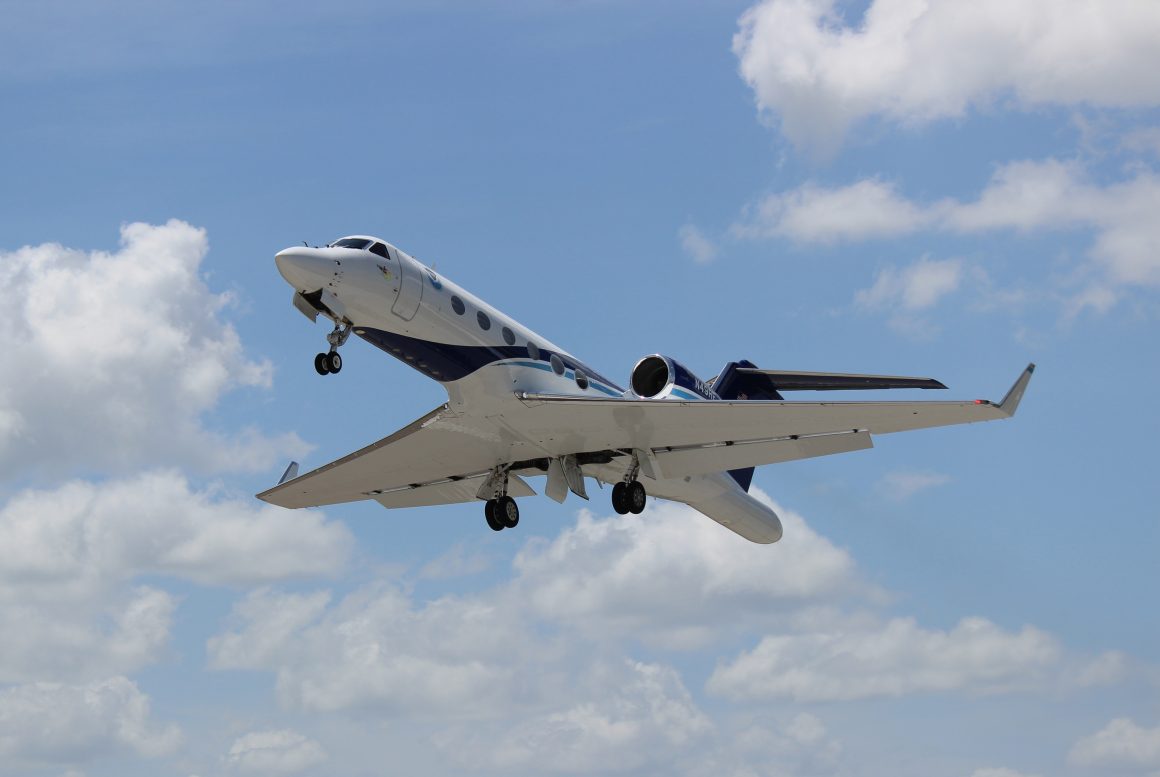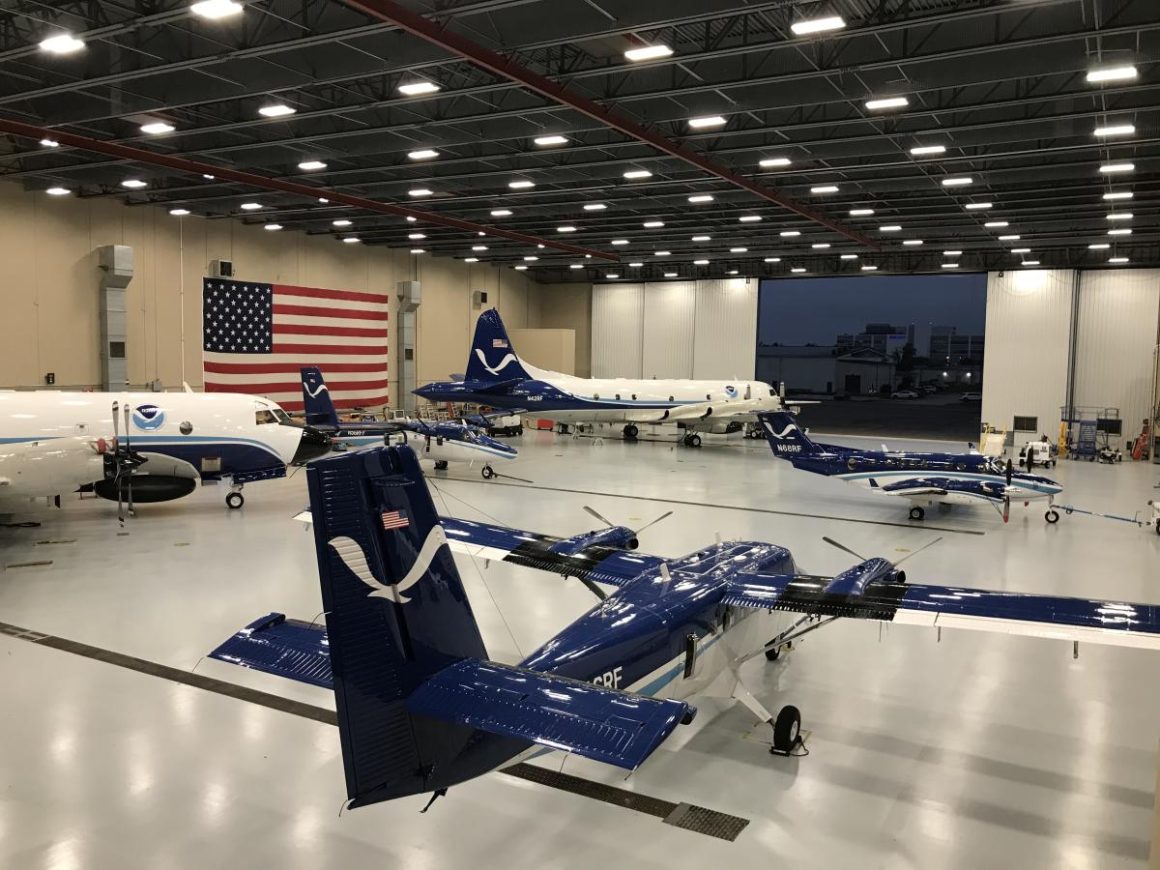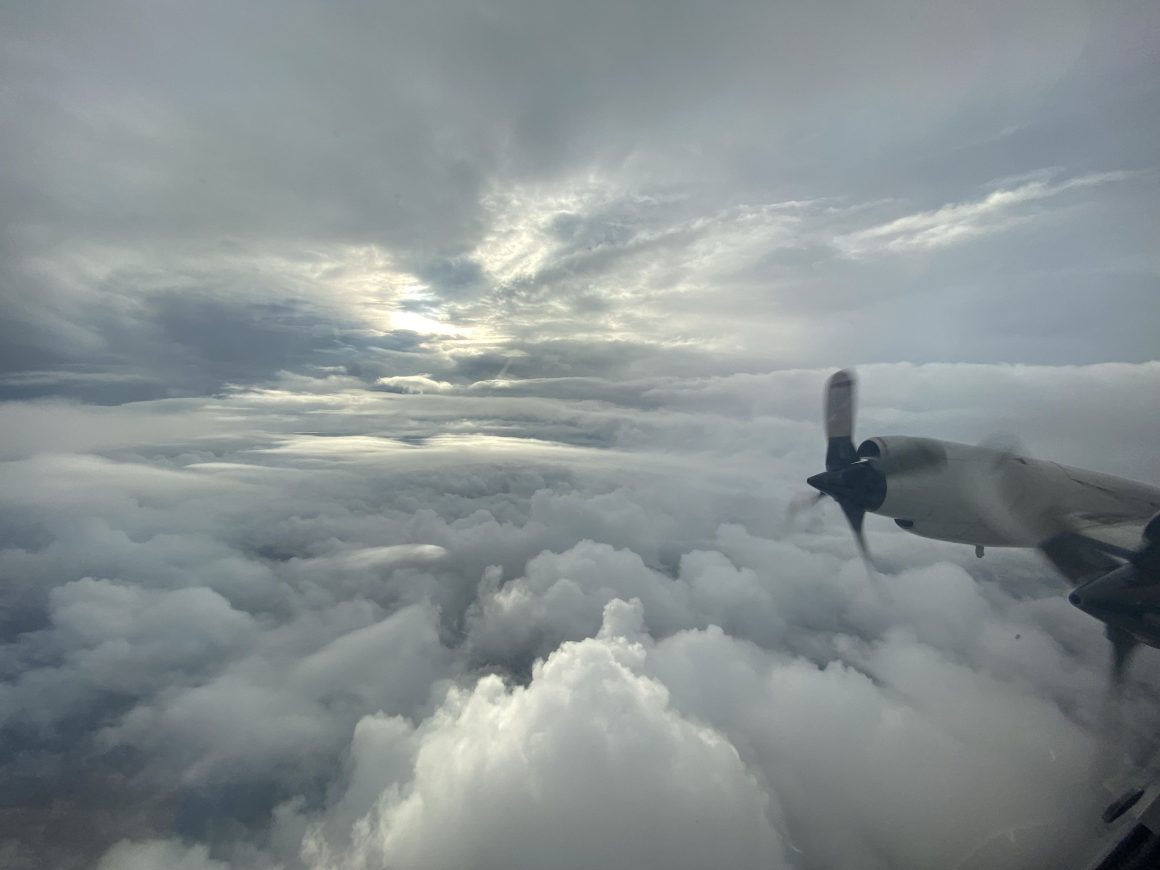We’ve all seen the images on The Weather Channel. When a hurricane is barreling toward the United States, harrowing (yet amazing) images from Hurricane Hunter aircraft inside the eye beam into our living rooms via our television screens.
While Hurricane Hunter aircraft have been around for decades, the National Oceanic and Atmospheric Administration (NOAA) thinks it’s time for another upgrade.
A second high-altitude jet will be joining NOAA’s Hurricane Hunter fleet, the agency announced this week.
NOAA’s G550s Will Replace the Older Gulfstream IV-SP

NOAA’s new fleet addition is a heavily modified Gulfstream G550, which was awarded the contract to Savannah, Ga.-based Gulfstream Aerospace Corporation. The bipartisan Inflation Reduction Act, signed into law by President Biden in 2022, largely funded the $106 million deal.
NOAA says the new G550 will join the fleet in 2028.
NOAA’s first G550, ordered in 2019, will be delivered early next year, just in time for the 2025 hurricane season. This aircraft will replace the agency’s aging Gulfstream IV-SP, which has been an integral part of the Hurricane Hunter fleet since 1996. The addition of the second G550 will significantly bolster NOAA’s capabilities in hurricane and tropical storm forecasting, atmospheric research, and other critical missions.
Gulfstream Aerospace president Mark Burns says his company has been providing aircraft to the U.S. Government for more than 50 years.
“We are proud to continue the partnership with NOAA’s G550,” Burns said in 2019. “Our aircraft platforms provide government and military customers with the flexibility, range, and altitude capabilities perfect for demanding missions.”
Flying High Above the Storm

The G550s are not ordinary corporate jets; they are specially modified with advanced systems designed to enhance the accuracy of weather forecasts. A significant feature of these aircraft is the tail-mounted Doppler radar system, which is crucial in collecting high-resolution data. This system, combined with other onboard instruments, allows the G550 to provide data essential for improving the accuracy of tropical storm and hurricane forecasting.
The Gulfstream G550 boasts impressive specifications, including a range of over 4,000 nautical miles and a maximum altitude of 51,000 feet. With a maximum mission length of approximately 14.5 hours when fully fueled, the G550 can undertake extensive research missions, flying high above weather systems to gather vital data.
The G550s will Complement Low-Altitude Missions

While the G550s will operate at high altitudes, providing a top-down view of weather systems, NOAA’s two quad-engine Lockheed WP-3D Orion turboprop aircraft will continue their low-altitude missions. The WP-3D Orions fly directly into storms, collecting data from within the turbulent environments of hurricanes and tropical storms.
This complementary approach ensures a comprehensive collection of data from the upper reaches of the atmosphere, through the eyewall, and even down to the temperature of the ocean surface.
The data collected by the G550s will significantly improve hurricane track and intensity forecasts. According to NOAA, this enhanced forecasting capability will save lives by providing more lead time for tropical forecasts, allowing communities to better prepare for impending storms.
NOAA Will Base the G550s in Lakeland

The new G550 will be based at the NOAA Aircraft Operations Center (AOC) at Lakeland Linder International Airport (LAL) in Lakeland, Florida. The AOC has been in Lakeland since 2017 when it moved from MacDill Air Force Base in Tampa.
The AOC in Lakeland is a hub of activity during hurricane season, coordinating the efforts of NOAA’s fleet of hurricane hunters. The addition of the second G550 will enhance the center’s operational capabilities, allowing for more comprehensive and accurate data collection during critical missions in the Atlantic, Pacific, Caribbean, and Gulf of Mexico.
In addition to the Lakeland AOC, NOAA’s Hurricane Hunter fleet works with the U.S. Air Force Reserve’s 53rd Weather Reconnaissance Squadron (WRS), based at Keesler Air Force Base in Biloxi, Miss.
Ten WC-130J “Super Hercules” Hurricane Hunter aircraft make up the fleet of the 53rd WRS.
Hurricane Hunter Missions Began in 1946

The first time a crewed mission flew into a hurricane was in 1943. Three years later, Hurricane Hunter missions officially commenced.
Since then, NOAA and the 53rd WRS have flown thousands of missions into some of the fiercest storms on Earth. The data collected on these missions has saved an untold number of lives.
Those of us in aviation know weather forecasting remains an imperfect science. However, the new G550s will bolster forecasting accuracy and undoubtedly save even more lives.
